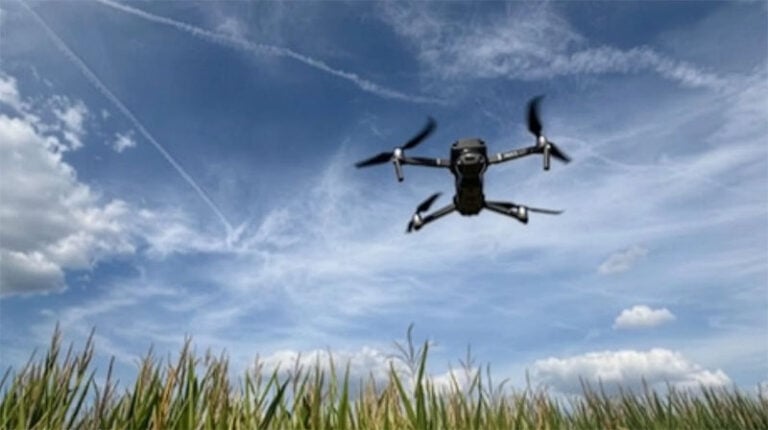Editor’s note: This is the first article in a two-part series on fish that have been introduced into Kentucky waters.
Fish species introduced into Kentucky waters through the years have had a wide variety of impacts, some good, some bad, some ugly.
In a presentation entitled Aquatic Invasive Species in Kentucky, prepared by Jeffrey Herod, Aquatic Nuisance Species Coordinator for the Kentucky Department of Fish and Wildlife Resources (KDFWR), the U.S. Geological Survey (USGS) estimated that there have been 67 introduced fish species in Kentucky.
The origin of the introduced species include fish from six continents, with a majority from North America.
Not all of the introduced species became established or are present today. Exotic fish species are fish that are not native to the Continental U.S.
The pathways to introduction includes fish that were intentionally stocked, unknown, bait release, escape from aquaculture facilities, and the illegal release of pet aquarium fish. Some of the species came here through range expansion.
Here’s a few high profile species on the list of introduced fish:
Good introductions
• Striped Bass

The Striped Bass (Morone saxatilis), a sleek, powerful fish with firm, white flesh, has long been regarded as one of the most important game and food fishes in the U.S.
The story behind the first stocking of Striped Bass in Kentucky is unprecedented and unique in the state’s fishery management history. In 1957, a crew of employees from KDFWR traveled to South Carolina and caught 12 adult Striped Bass on rod and reel. The fish were transported in a fish truck back to Kentucky, where they were placed in Lake Cumberland.
Through the decades since then Striped Bass, obtained from various sources, have been stocked here. In recent years the source of fry has been a hatchery operated by the Tennessee Wildlife Resources Agency (TWRA). The fry are raised up to 1 1/2-inch fingerlings at Minor Clark Hatchery, in Morehead. Kentucky waters stocked include the Tennessee River below Kentucky Dam, the Cumberland River below Barkley Dam, Lake Cumberland and the Ohio River.
• Trout
All four species of trout present in Kentucky waters today were intentionally introduced. Trout are a high quality food fish and offer outstanding fishing opportunities.
1.) The Rainbow Trout (Oncorhynchus mykiss) was the first trout species ever stocked in Kentucky waters.

A U.S. Bureau of Fisheries annual report stated that 1,600 rainbow trout from federal hatcheries were stocked in the Laurel River in Corbin in 1898.
KDFWR stocking records go back to 1956, when 1,200 adult fish were stocked in the Lake Cumberland tailwaters. In the mid-1960s stockings became more consistent, and have continued through the decades in some lakes, tailwaters and streams.
2.) The Brown Trout (Salmo trutta) is a European species that has been widely introduced in the U.S., dating back to April 1884 when 4,900 Brown Trout fry were released into the Baldwin River, a tributary of the Pere Marquette River in Michigan.
Kentucky’s first stocking of brown trout was in the Lake Cumberland tailwaters in 1982. Through the years Brown Trout have been stocked in several major lakes, their tailwaters and streams across the state.
3.) The Cutthroat Trout (Oncorhynchus clarkii) is the most recent trout introduction.
On April 16, 2019 KDFWR fishery personnel stocked the Cutthroat Trout for the first time.
The 38,028 fish released in the Cumberland River below Wolf Creek Dam were Yellowstone strain Cutthroat Trout, spawned and raised up to stocking size at the Norfork National Fish Hatchery in Arkansas. KDFWR crews stocked the trout at Bakerton, Ky., the ramp at Burkesville, and the Ky. 61 bridge, just downstream from Burkesville.

4.) The Brook Trout (Salvelinus fontinalis) is a species of char native to eastern U.S. and Canada, with wild populations in the U.S. mostly confined to higher elevations of the Appalachians.
There’s a small population in the upper reaches of Martin’s Fork of the Cumberland River, in Cumberland Gap National Historical Park, that was once thought to be native.
“Ichthyologists who have studied the regional fish distributions (present and historical) do not consider the Brook Trout to be part of Kentucky’s native fish fauna,” said Matthew Thomas, Ichthyologist for KDFWR. “There is no evidence that they occurred here naturally or prior to European settlement.”
Brook trout were first stocked in the Lake Cumberland tailwaters in 2011. The most recent stocking of 2,275 “brookies” was at the ramp just below Wolf Creek Dam in 2023.
All four trout species are present in the Lake Cumberland tailwaters, periodically stocked at nine boat launching ramps from Wolf Creek Dam downstream to near the Tennessee line.
• Coosa Bass
The Coosa Bass (Micropterus coosae), the state’s fourth species of black bass, is something of a mystery fish.
The Coosa Bass, also known as the redeye bass, is native to the Coosa River drainage in Georgia and Alabama.
It was once thought that the Coosa Bass might be a native species, a relict population that found asylum above Cumberland Falls. But its status as an introduced species was verified in the Distributional Atlas of Kentucky Fishes, which stated that Coosa Bass obtained in Georgia were stocked into the lower reaches of Martin’s Fork of Cumberland River around 1950.
Today, the species is only found in Harlan County, in the lower reaches of Martin’s Fork of the Cumberland River, 334-acre Martins Fork Lake, and its tailwaters.
This headwater tributary arises in Cumberland Gap National Historical Park in Bell County and eventually merges with the Poor Fork of the Cumberland River, near Harlan, Kentucky.
Bad introductions
• The Alewife
The Alewife (Alosa pseudoharengus) is an anadromous species of herring. Its native range is the Atlantic Coast from Red Bay, Labrador, to South Carolina. There are many landlocked populations.

The Alewife is a U.S. National Marine Fisheries Service “Species of Concern,” implicated in the decline of many native fish in the Great Lakes. The diet of Alewife is diverse and impactful, as it is a proficient feeder of fish eggs, insects, zooplankton, and larval fish.
Initially sampled in Kentucky by the USGS in 1986 in the Ohio River in Boone, Bracken, Campbell, Greenup and Pendleton counties, researchers also found Alewives in 2000 in Carr Creek Lake, in Knott County
Alewives are present in Dale Hollow Lake and three other reservoirs in east Tennessee.
Anglers netted Alewives from Dale Hollow Lake and transported them to Lake Cumberland, to use as bait for Striped Bass, dumping their unused bait in the lake.
When Alewives became established in Lake Cumberland in the 1990s Striped Bass behavior was altered. Most notably, stripers began feeding less on the surface, since Alewives prefer cooler water, which is typically deeper than what shad prefer.
Next week: The series continues with more bad introductions, and five ugly ones.

















